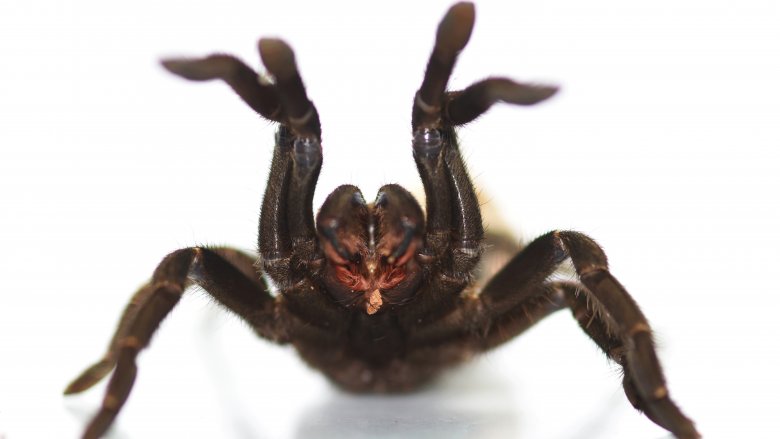What Do Tarantulas Eat?
There are two kinds of people in the world: those who find spiders cute and cuddly, and those who will buy a one-way plane ticket at the sight of one. Given their size, hairy nature, and fangs, tarantulas are liable to strike fear into the hearts of most men and women — but they're really not as bad as they appear. Peel back the misconceptions about these spiders and the level of danger they actually present, and you may come away wanting one for yourself.
Contrary to what many think, tarantulas are not generally a threat to human life, and they can't (and won't) try to eat you. BBC states that tarantulas aren't naturally very aggressive, preferring to run and hide when they sense body heat. If one is provoked into biting with its admittedly large fangs, most bites are no worse than a bee sting, if the tarantula chooses to inject venom at all.
While humans aren't on the menu, plenty of other species have been served notice by tarantulas. The National Wildlife Federation describes them as "fierce predators of insects," which can also tackle small animals like mice, frogs, toads, and even birds, in the case of the Goliath bird-eating tarantula.
While tarantulas don't use webs to catch prey, National Geographic says they may spin a trip wire to keep watch for potential meals. When something suitable approaches, the spider will grab its prey and inject venom, allowing it the time to liquefy its meal with digestive enzymes before sucking them up like a Shamrock Shake.
So you can rest assured that while tarantulas are big and can look nasty, in the unlikely event you are bitten by one, it probably won't be all that painful, and you certainly won't be eaten, since you're way too big to liquefy and suck up through their straw-like mouth cavities.
